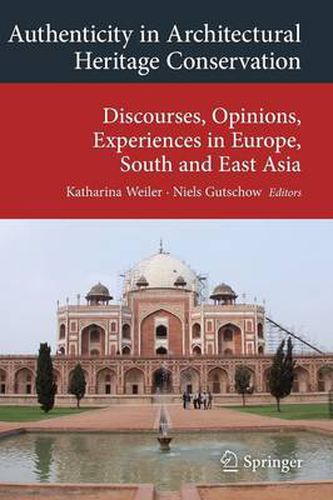Readings Newsletter
Become a Readings Member to make your shopping experience even easier.
Sign in or sign up for free!
You’re not far away from qualifying for FREE standard shipping within Australia
You’ve qualified for FREE standard shipping within Australia
The cart is loading…






This title is printed to order. This book may have been self-published. If so, we cannot guarantee the quality of the content. In the main most books will have gone through the editing process however some may not. We therefore suggest that you be aware of this before ordering this book. If in doubt check either the author or publisher’s details as we are unable to accept any returns unless they are faulty. Please contact us if you have any questions.
The book contributes to a recontextualization of authenticity by investigating how this value is created, reenacted, and assigned. Over the course of the last century, authenticity figured as the major parameter for the evaluation of cultural heritage. It was adopted in local and international charters and guidelines on architectural conservation in Europe, South and East Asia. Throughout this period, the concept of authenticity was constantly redefined and transformed to suit new cultural contexts and local concerns. This volume presents colonial and postcolonial discourses, opinions, and experiences in the field of architectural heritage conservation and the use of site-specific practices based on representative case studies presented by art historians, architects, anthropologists, and conservationists from Germany, Nepal, India, China, and Japan. With more than 180 illustrations and a collection of terminologies in German, English, Sanskrit, Hindi, Nevari and Nepali, classical Chinese and standard Mandarin, and Japanese, these cross-cultural investigations document the processual re-configuration of the notion of authenticity. They also show that approaches to authenticity can be specified with key analytical categories from transcultural studies: appropriation, transformation, and, in some cases, refusal.
$9.00 standard shipping within Australia
FREE standard shipping within Australia for orders over $100.00
Express & International shipping calculated at checkout
This title is printed to order. This book may have been self-published. If so, we cannot guarantee the quality of the content. In the main most books will have gone through the editing process however some may not. We therefore suggest that you be aware of this before ordering this book. If in doubt check either the author or publisher’s details as we are unable to accept any returns unless they are faulty. Please contact us if you have any questions.
The book contributes to a recontextualization of authenticity by investigating how this value is created, reenacted, and assigned. Over the course of the last century, authenticity figured as the major parameter for the evaluation of cultural heritage. It was adopted in local and international charters and guidelines on architectural conservation in Europe, South and East Asia. Throughout this period, the concept of authenticity was constantly redefined and transformed to suit new cultural contexts and local concerns. This volume presents colonial and postcolonial discourses, opinions, and experiences in the field of architectural heritage conservation and the use of site-specific practices based on representative case studies presented by art historians, architects, anthropologists, and conservationists from Germany, Nepal, India, China, and Japan. With more than 180 illustrations and a collection of terminologies in German, English, Sanskrit, Hindi, Nevari and Nepali, classical Chinese and standard Mandarin, and Japanese, these cross-cultural investigations document the processual re-configuration of the notion of authenticity. They also show that approaches to authenticity can be specified with key analytical categories from transcultural studies: appropriation, transformation, and, in some cases, refusal.